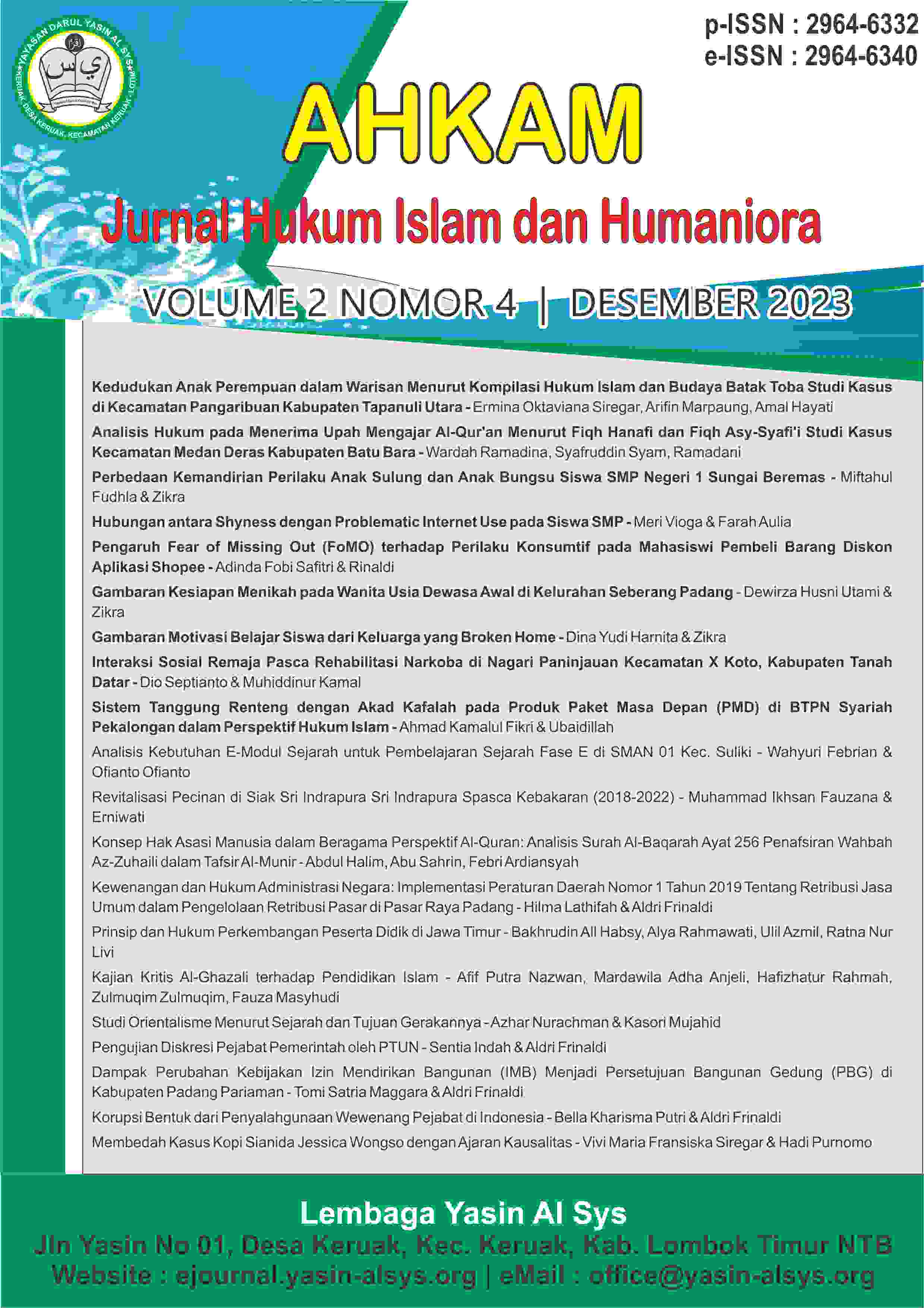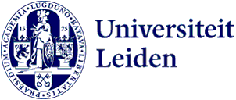Perbedaan Kemandirian Perilaku Anak Sulung dan Anak Bungsu Siswa SMP Negeri 1 Sungai Beremas

Main Article Content
Abstract
Behavioral independence is a child's attitude or actions in determining and making decisions based on their own desires without depending on other people. However, what happens in the field is that students still do not have the confidence to make decisions regarding their education. One factor that causes this is birth order. This means that in the family parents give children the opportunity, trust and freedom to act based on the child's position or birth order. The aim of this research is to describe the behavior of the eldest and youngest children of SMP Negeri 1 Sungai Beremas students and see whether or not there are differences in the behavior of the eldest and youngest children. The research method used is a quantitative method with a descriptive-comparative analysis approach. The population in this study was 170 students and the sample was 119 students who were the oldest and youngest students. Samples were taken using the Slovin formula. The sampling technique used is probability sampling with simple random sampling. The instrument used is a behavioral independence questionnaire with an interval scale. The research results obtained were that the oldest and youngest children had an average of behavioral independence in the high category with an average result of 51 and 53. Meanwhile, the results of the t test analysis showed that there was a difference in behavioral independence between the eldest and youngest children with a significance of 0.015 with the mean behavioral independence of the eldest child of 101.56 and the mean behavioral independence of the youngest child of 105.17. So it can be concluded that the youngest child is more independent than the eldest child.
Downloads
Article Details

Authors retain copyright and grant the journal right of first publication with the work simultaneously licensed under a Creative Commons Attribution-NonCommercial-ShareAlike 4.0 International License that allows others to share the work with an acknowledgement of the work's authorship and initial publication in this journal.
References
Abdi, S., & Karneli, Y. (2020). Kecanduan Game Online: Penanganannya dalam Konseling Individual. Guidance, 17.
Ali, M., & Ansori, M. (2009). Psikologi Remaja. Bandung: Bumi Aksara.
Chandra, A. (2015). Perbedaan Kemandirian Antara Anak Sulung, Anak Tengah, dan Anak Bungsu Pada Siswa SMU Mulia Pratama Medan. Jurnal Psikologi Konseling, 7(1), 1–11.
Eka, T. (2016). Perbedaan Kemandirian Antara Anak Sulung dan Anak Bungsu di MTsN Langsat Kadap Pasaman. [Skripsi]. Padang: STKIP PGRI Sumatera Barat.Diterbitkan.
Fadhilah, F., & Netrawati, N. (2022). Analysis of Bullying Behavior Experienced by Street Children. Counseling and Humanities Review, 2(2), 34–40.
Feist, J., & Feist, G. J. (2010). Teori Kepribadian. Jakarta: Salemba Humanika.
Firman. (2018). Penelitian Kualitatif dan Kuantitatif. Jurnal Bimbingan Dan Konseling.
Fitri, E., Ifdil, I., & Neviyarni, S. (2016). Efektivitas Layanan Informasi dengan Menggunakan Metode Blended Learning untuk Meningkatkan Motivasi Belajar. Jurnal Psikologi Pendidikan dan Konseling: Jurnal Kajian Psikologi Pendidikan Bimbingan dan Konseling, 2(1).
Fitri, E., Zola, N., & Ifdil, I. (2018). Profil Kepercayaan Diri Remaja serta Faktor-Faktor yang Mempengaruhi. JPPI (Jurnal Penelitian Pendidikan Indonesia), 4(1), 1–5.
Fitria, F., & Zikra, Z. (2020). Self Adjustment of High School Students with Peers and Its Implications in Guidance and Counseling Service. Jurnal Neo Konseling, 3(1), 61.
Hurlock. (2011). Psikologi perkembangan suatu pendekatan sepanjang rentang kehidupan (edisi kelima). Erlangga.
Khoirunnisa, N. (2016). Pengaruh Urutan Kelahiran dan Jenis Kelamin Terhadap Motivasi Belajar Siswa di SMP An-Nur Bululawang. [Skripsi]. Malang: UIN Maulana Malik Ibrahim Malang. Diterbitkan.
Komalasari, G., Wahyuni, E., & Karsih. (2011). Asesmen Teknik Non-tes dalam Perspektif BK Komprehensif. Jakarta: PT. Indeks.
Muyana, S., Firman., & Syahniar. (2018). Efektivitas Pelaksanaan Layanan Bimbingan Kelompok dengan Menggunakan Media Auto Visual untuk Meningkatkan Konsep Diri Siswa. Jurnal Ilmiah Konseling.
Najmi, L. (2018). Gambaran Kemandirian Belajar Anak Ditinjau dari Urutan Kelahiran di SMP N 3 Pariangan Kelas VII dan VIII Tahun Ajaran 2017/2018. [Skripsi]. Batusangkar: IAIN Batusangkar. Diterbitkan.
Nova, L. M., Firman, F., & Sukmawati, I. (2016). Efektivitas Layanan Bimbingan Kelompok dalam Meningkatkan Self Efficacy Siswa. Konselor, 2(2).
Pangestika, E. V. (2017). Perbedaan Kemandirian Sikap Antara Anak Sulung dan Anak Bungsu di SMP Negeri 2 Kalikajar. [Skripsi]. Salatiga: Universitas Kristen Satya Wacana. Diterbitkan.
Prayitno. (2012). Jenis Layanan dan Kegiatan Pendukung Konseling. Padang: BK FIP UNP.
Prayitno, & Amti, E. (2004). Dasar-Dasar Bimbingan dan Konseling. Jakarta: Rineka Cipta.
Purbasari, K. D., & Nawangsari, N. A. F. (2016). Perbedaan Kemandirian Pada Remaja yang Berstatus Sebagai Anak Tunggal Ditinjau dari Persepsi Pola Asuh Orangtua. Jurnal Psikologi Pendidikan dan Perkembangan, 5(1), 1–9.
Putri, M. W. D., Ridha, M., & Zikra. (2016). Hubungan antara Dukungan Sosial Orang tua dengan Kepercayaan Diri Siswa di SMP Negeri 22 Padang. Jurnal Penelitian Guru Indonesia, 2(1), 19–23.
Ramadhan, M., & Saripah, I. (2017). Profil Kemandirian Siswa SMA Berdasarkan Urutan Kelahiran dan Implikasinya terhadap Bimbingan dan Konseling. Indonesian Journal of Educational Counseling, 1(2), 145–162.
Riawan, Y. (2016). Perbedaan Kemandirian Remaja Ditinjau dari Data Demografi (Urutan Kelahiran dan Jenis Kelamin). [Skripsi]. Pekanbaru: UIN Sultan Syarif Kasim Riau. Diterbitkan.
Riduwan. (2012). Belajar Mudah Penelitian Untuk Guru dan Karyawan Peneliti Pemula. Bandung: Alfabeta.
Steinberg, L. (2017). Adolescence (Eleventh Edition). New York: McGraw-Hill Education.
Sugiyono. (2016). Metode Penelitian Kuantitatif Kualitatif dan R&D. Bandung: Alfabeta.
Taufik. (2014). Model-model Konseling. Padang: BK FIP UNP.
Walgito, B. (2010). Pengantar Psikologi Umum. Yogyakarta: CV. Andi Offset.
Yusuf, A, M. (2017). Metode Penelitian: Kuantitatif, Kualitatif, & Penelitian Gabungan. Jakarta: Kencana.
Find the perfect home for your research! If this journal isn't the right fit, don't worry—we offer a wide range of journals covering diverse fields of study. Explore our other journals to discover the ideal platform for your work and maximize its impact. Browse now and take the next step in publishing your research:
| HOME | Yasin | AlSys | Anwarul | Masaliq | Arzusin | Tsaqofah | Ahkam | AlDyas | Mikailalsys | Edumalsys | Alsystech | AJSTEA | AJECEE | AJISD | IJHESS | IJEMT | IJECS | MJMS | MJAEI | AMJSAI | AJBMBR | AJSTM | AJCMPR | AJMSPHR | KIJST | KIJEIT | KIJAHRS |





















